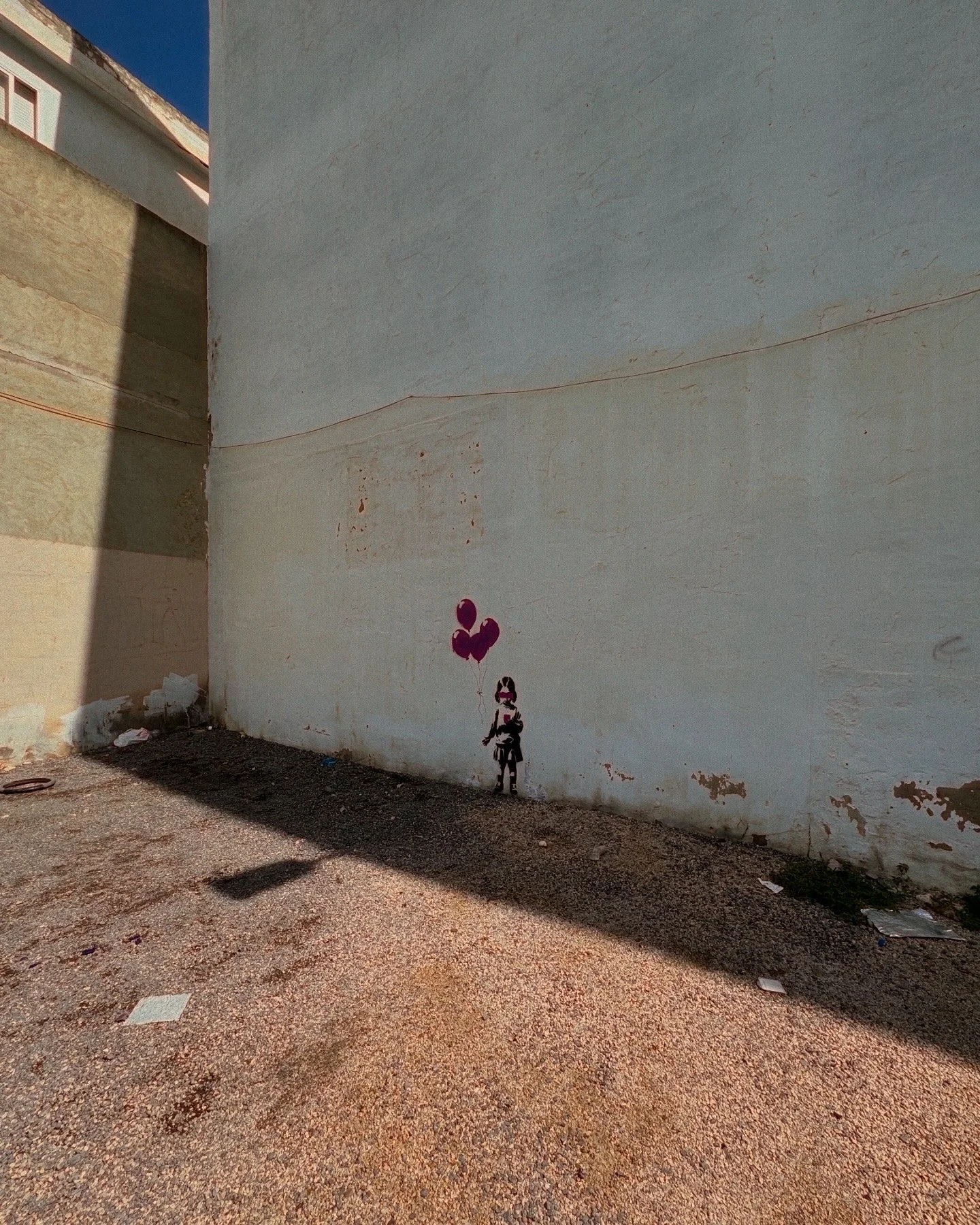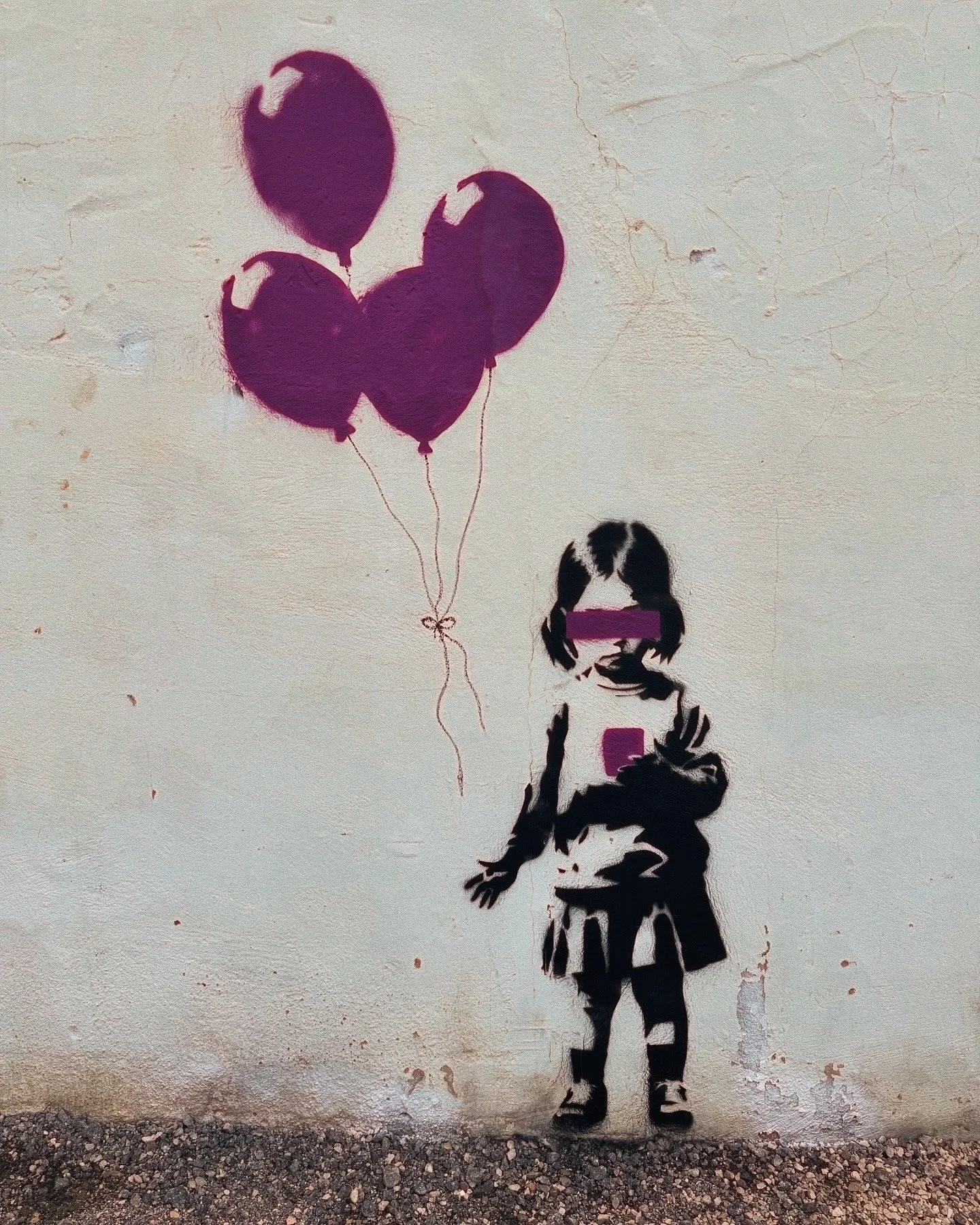Gone
Spray paint on wall, stencil technique
Executed 21st September 2024, Albacete, Spain
In the early morning of 21 September 2024, the walls of Albacete quietly received one of Miguel Fernández’s most intimate and emotionally charged interventions. Titled Gone, the piece appeared unannounced, an image of striking simplicity and haunting resonance, marking the artist’s return to his hometown with a message that is both personal and universal.
The piece depicts a small girl standing alone, her eyes obscured by a thick band of colour, her gaze directed toward a smartphone held tightly in her hands. Above her, four floating balloons, painted in deep purple, hover, their strings just out of reach. Together, these elements form a modern allegory of loss: the balloons signify the flight of childhood (imagination, play, and innocence) while the device becomes the tether that fails to hold them. The colour, vivid yet somber, underscores the emotional paradox of the digital age: the seduction of connection, and the silent devastation it conceals.
Executed in Fernández’s signature stencil style, the composition unites the tenderness of gesture with the austerity of design. The crisp black silhouette of the child contrasts with the roughness of the wall, while the purple accents create a visual and emotional tension, both the colour of play and of warning. The cracked surface beneath the paint becomes part of the work’s language: a fragile skin that mirrors the vulnerability of a generation raised on screens.
The intervention’s impact was immediate. Locals discovered it at dawn, and within hours the image had spread across social media and the local press, ironically amplified through the very networks it critiques. The newspaper coverage framed it as a rare cultural event, evidence of art’s power to interrupt daily routine with meaning. Passersby stopped not to take selfies but to look, to reflect. In that pause, Fernández’s mission found its measure: awareness through encounter.
Gone also carries deep autobiographical significance. Albacete is where Fernández once taught and first witnessed, with growing unease, the gradual fading of play and imagination in the lives of children overtaken by digital obsession. To return and mark the city’s walls with this quiet lament was both an act of homage and of warning, a gesture of belonging and rupture.
Philosophically, Gone distills the essence of Fernández’s artistic vision. It is an image of absence, a portrait of presence undone. The child’s body is there, solid and small, yet her mind is elsewhere, dissolved into the device’s invisible ether. The balloons ascend, unclaimed, toward a vanishing point beyond the frame, symbols of what has already slipped away. In this sense, the work’s title functions not as description but as diagnosis: Gone is not what happens after, but what is happening now.
Significance
Gone stands among Fernández’s most affecting street works, subtle yet devastating in its clarity. It embodies his belief that art belongs in public space, where it can reach those who would never step into a gallery, and where its message cannot be ignored. With the innocence of its imagery and the gravity of its theme, Gone encapsulates the artist’s lifelong pursuit: to awaken empathy, to expose disconnection, and to remind us that awareness, like childhood, can vanish if we do not hold on.



